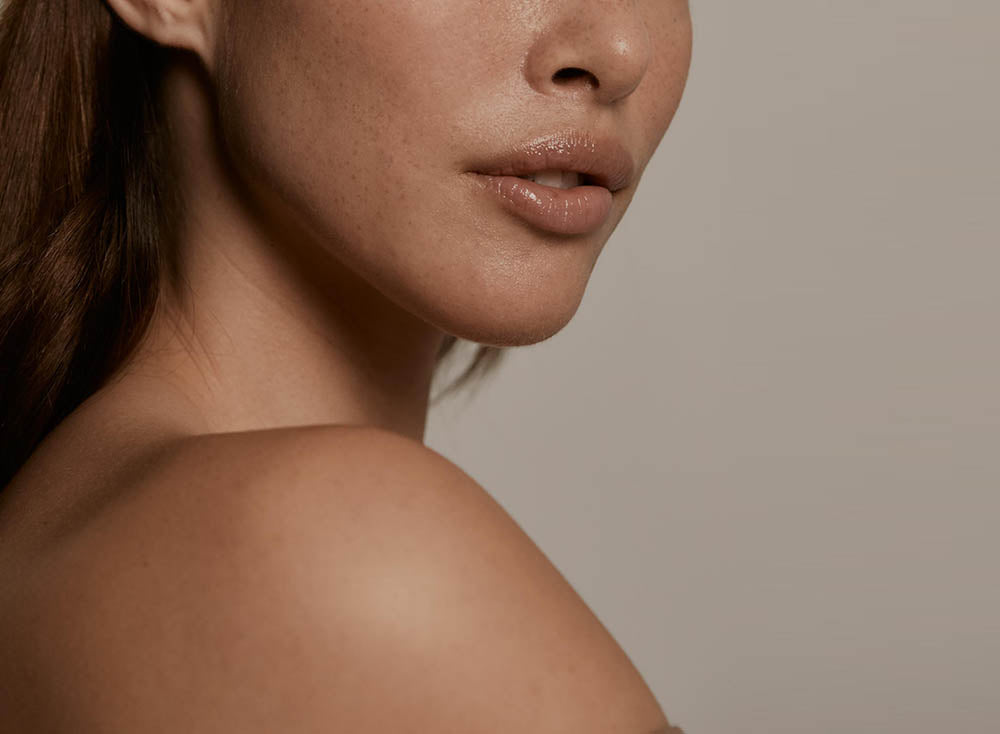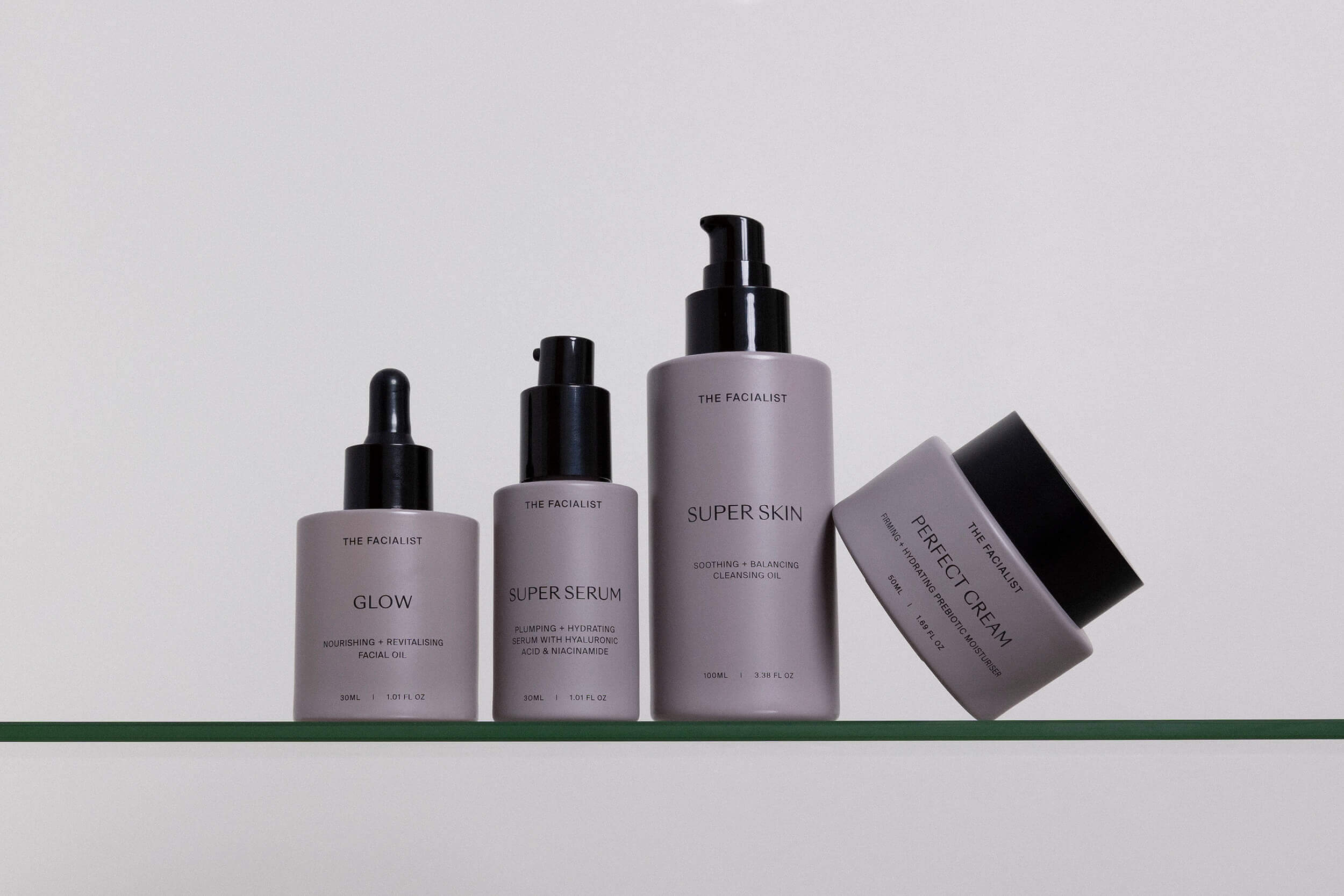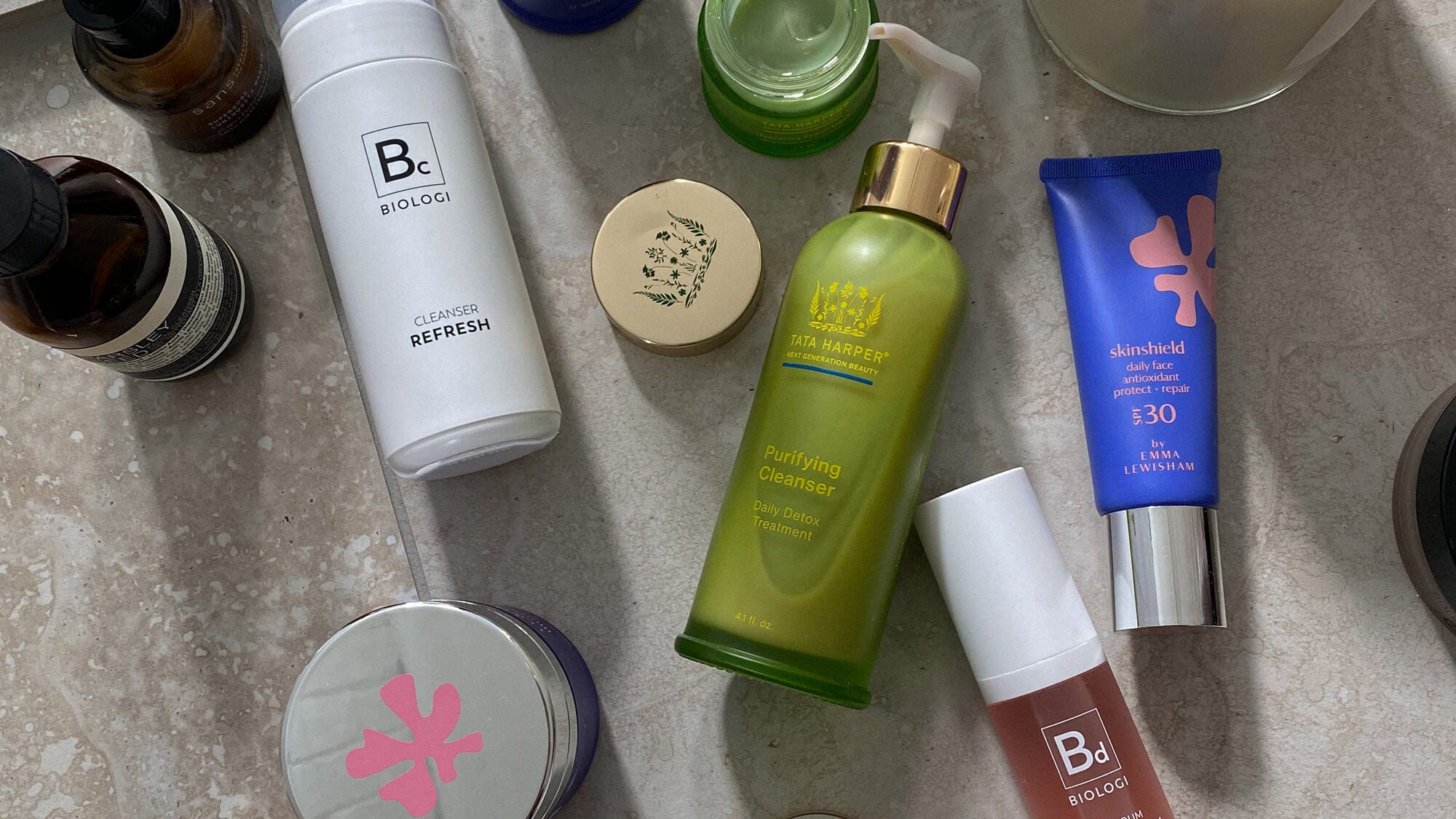Understanding Your Skin Type

Your skin is our M.O, we want you to have the best skin of your lives! Which is why we developed our Skin Prescription service. In which our skin experts will create a bespoke routine, tailored to your individual needs. We also believe that knowledge is power, and understanding your skin type is an essential part of developing a skincare routine that works for you.
There are four main skin types: normal, oily, dry, and combination. Determining your skin type can help you choose the right products and ingredients to address your unique concerns.
Whilst full of nuances, here is a quick low down: Normal skin is balanced, with a healthy amount of oil production and minimal sensitivity or blemishes. Oily skin tends to produce excess sebum, leading to shiny, greasy skin and an increased risk of clogged pores and acne. Dry skin lacks hydration and can appear dull, flaky, or tight. Combination skin features a mix of oily and dry areas, often associated with oiliness in the T-zone (forehead, nose, and chin) and dryness on the cheeks.
How can I establish what my skin type is?
To determine your skin type, start by washing your face with a gentle cleanser (not foam or gel, something gentle which doesn’t stripe the skin of all its goodness) and waiting for 30 minutes without applying any products. Observe how your skin feels and looks:
- Normal skin will feel balanced and comfortable, without any noticeable dryness or oiliness.
- Oily skin will look shiny and feel greasy, with visible pores and a tendency towards breakouts.
- Dry skin will feel tight and appear flaky or rough, with a lack of natural radiance.
- Combination skin will exhibit oily areas in the T-zone and dryness on the cheeks.
Once you've determined your skin type you can choose skincare products that are tailored to your individual needs. For example, those with dry skin may benefit from a heavier, more moisturising cream, while those with oily skin may prefer a lightweight gel formula. It's also important to consider ingredients that target your specific concerns, such as hyaluronic acid for hydration or vitamin A for acne-prone skin.
It's also important to note that your skin type may change over time, particularly as you age or experience hormonal changes. Regularly re-evaluating your skin and adjusting your skincare routine accordingly can help to keep your skin looking and feeling its best.

How to do I create my own skincare routine?
Normal Skin
Normal skin will have a balanced amount of oil production and minimal sensitivity or blemishes. If you have normal skin, your skin likely looks and feels healthy, with a smooth texture and even tone.
Care: Focus on maintaining its natural balance. And keeping that skin barrier nice and healthy. This means using a gentle cleanser to remove dirt and oil, followed by a lightweight serum and moisturiser to keep your skin hydrated. Look for products that contain ingredients like hyaluronic acid and antioxidants, which can help to support your skin's natural radiance and protect against environmental stressors. Always finish the AM routine with a SPF.
Suggested Products:
- Double Cleanse: Emma Lewisham Oil Cleanser and Illuminating Exfoliant
- Serum: Emma Lewisham Reset Serum
- Moisturiser: Janesce Nourishing Skin Reviver
- SPF: Raaie Sun Milk Drops
Oily Skin
If you have oily skin, you're likely familiar with the challenges of managing excess sebum production. Oily skin can appear shiny or greasy, with visible pores and an increased risk of clogged pores and acne.
Care: It's important to choose products that help to regulate oil production without stripping your skin of its natural moisture. A common misconception that oily skin needs to be striped, take a nurturing approach not an attacking one. Oily skin needs hydration and not to stray away from this. You can absolutely use an oil cleanser and face oils on oily skin. They can help rebalance oil production, opposed to putting it in overdrive. Avoid heavy creams, but still look for hydrating ingredients to keep your skin barrier healthy.
Suggested Products:
- Cleanse: Synergie Ultra Cleanse
- Exfoliant: Josh Rosebrook Daily Acid Toner
- Serum AM: Janecse Perfecting Gel
- Serum PM: Josh Rosebrook Active Infusion Oil
- Moisturiser: Janesce Moisture Balance
- Mask: Mukti Deep Cleanse Antioxidant
Dry Skin
Dry skin lacks lipids and oils, and can appear dull, flaky, or tight. If you have dry skin, you may experience discomfort or sensitivity, especially during the winter months or in dry climates.
Care: Hydrating and nourishing your skin with should be your key focus. Add in a hydrating mist, and a hyaluronic acid serum which can help draw moisture into the skin. Look for moisturisers that contain ingredients like ceramides and shea butter, and nourishing facial oils like our Glow which can help to lock in moisture and restore your skin's natural barrier function. Avoid harsh, stripping cleansers and opt for gentle formulas that won't further dry out your skin.
Suggested Products:
- Cleanse: Janesce Rose Petal Cleanser
- Exfoliant: Janesce Enzyme Peel
- Mist: Josh Rosebrook Hydrating Accelerator
- Serum: Janecse Perfecting Gel
- Moisturiser: Janesce Revitalizing Cream
Combination Skin
Combination skin features a mix of oily and dry areas, often with oiliness in the T-zone (forehead, nose, and chin) and dryness on the cheeks. This skin type can be tricky to care for, as it requires a balance of hydrating and oil-regulating products.
Care: Use a gentle cleanser to remove dirt and oil, be sure you are exfoliating properly (still gentle) and regularly, followed by a lightweight moisturizer on the dry areas of your face. Look for products that contain ingredients like niacinamide and vitamin C, which can help to regulate oil production and brighten your complexion. Avoid heavy creams on the oily areas of your face, which can exacerbate oiliness.
Suggested Products:
- Cleanse: Synergie BioCleanse
- Mist: Josh Rosebrook Hydrating Accelerator
- Serum AM: Raaie Morning Dew Vitamin C Serum
- Serum PM: Synergie Ultimate A
- Moisturiser: Mukti Balancing Moisturizer
- Mask: Janesce Ancient Earth Mineral Complex


By tailoring your products and ingredients to your individual needs, you can help to support healthy, glowing skin at any age. If you're unsure of your skin type, consider booking an in-person consultation with one of our skin experts or trying our complimentary Skin Prescription. Better Skin is just a few clicks away….


